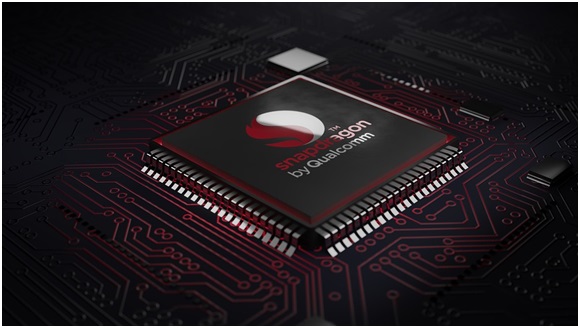What are mobile microchips?
From playing a casino game on your mobile to making a video call, mobile microchips are vital components in the heart of today's mobile devices.

These chips are primarily responsible for processing data and executing instructions inside the device. In short, they make it work.
They may be tiny components but have gradually been improved to becomevery low-power and high-performance ingredients powering the unstoppable advance of mobile technology.
Mobile microchips are vital in enabling smartphones to provide a seamless user experience for the most demanding graphic-rich games like Call of Duty or live streaming casino games like poker.
They don't just do one job. Modern chips are very versatile.
Mobile microchips may function asa central processing unit, a graphics processing unit, a memorystoreora wireless communication module.
Together, they form the components that combine to provide all the functionality and performance that users expect from modern mobile devices.
Overall, the advances in chip design and performance in recent years have enabled smartphones and tablets to become increasingly powerful and versatile.

But it hasn'tbeen all plain sailing for chips in mobiles. There are pros and cons to their use:
Pros
- Improved performance: Mobile microchips are among the most high-performance varieties, and this allows for faster processing speeds and smoother operation of the latest mobile devices.
- Lower power consumption: The latest mobile microchips are designed to be very energy-efficient.This can help to prolong the mobile's battery life, reducing the need for charging.
- Small size: Mobile microchips have become so small they can easily be integrated into even the thinnest mobile devices. As devices get smaller and thinner, this is a vital factor for manufacturers.
- Versatility: The latest chips are versatile enough to be used for a wide range of jobs inside the smartphone, ranging from gaming and video streaming to productivity and communication.
Cons
- Heat generation: Mobile microchips can generate a significant amount of heat when in use.This can cause problems with device performance or even damage the device itself.
- Limited upgradability: The latest chips are often integrated into the device's hardware. This means they may not be easily upgradable or replaceable –this limits the device's longevity.
- Cost: These components can be expensive to manufacture and this can contribute disproportionately to the overall cost of mobile devices.
- Security concerns: Mobile microchips can be vulnerable to security breaches or attacks, which can compromise user data and privacy.
Overall, however, the industry has decided that the advantages of mobile microchips outweigh the disadvantages.Today they are considered critical to the performance and functionality of modern mobile devices.
Gaming chips
Mobile microchips are particularly important in mobile gaming.
Mobile games have become increasingly sophisticated and demanding in terms of processing power and graphics performance.The mobile microchip plays a critical role in delivering the latest smooth and immersive gaming experience.
Mobile microchips are capable of handling complex game mechanics, rendering high-quality graphics, and providing fast and responsive gameplay.
The latest chips even have advanced artificial intelligence capabilities that can provide a more personalized gaming experience.

And the future?
The future for mobile microchips is surely guaranteed. They have become a vital ingredient in the portable device revolution.
In fact, with continued advances in technology and design, chips are expected to drive even more improvements in mobile performance, energy efficiency, and functionality.
One major partof mobile microchip development is likely to be the move toward more specialized and integrated chips.These can combine multiple functions and components into a single component.
For example, some mobile microchips are already incorporating artificial intelligence and machine learning capabilities. These will increasingly be used to help a smartphone adapt and become used to an individual user's preferences.
Another trend is the development of microchips that are optimized for specific applications, such as gaming, video streaming, or virtual and augmented reality.
It is expected that these specialized microchips will increasingly be used to deliver superior performance for specific tasks, while also reducing power consumption and extending battery life.
And if that's not enough, there is also ongoing research into new materials and manufacturing processes that can further improve the performance, efficiency, and functionality of mobile microchips.
For example, the development of new nanoscale materials and 3D printing techniques could enable the bulk creation of microchips with much greater processing power and energy efficiency in the future.
Industry insiders expect the future for mobile microchips will be characterized by continued innovation and advancement. There are now enormous numbers of designers and manufacturers working on mobile microchips.
They know how important these tiny components have become – and how they will be expected to continue to meet the growing demand for high-performance, energy-efficient, and versatile mobile devices.
- Phone is water soluble
- Use mobile device gestures
- Reveal how to transform ordinary people into superman
- Fabrication of microchips from molybdenum materials
- A close-up of the expensive gold inlaid mobile home
- Top 10 most played mobile games in January 2015 part 2
- 40 years of mobile phones
- British companies want to implant microchips on workers
- T-Mobile Super Mobile Ameo launched
- Hungarian mobile TV test
- The moon will have mobile data carriers
- Vietnam Mobile Awards 2006: MobiFone, Nokia won
 America develops cruise missiles in formation
America develops cruise missiles in formation Develop smart contact lenses that the US military has been looking for for a long time
Develop smart contact lenses that the US military has been looking for for a long time 6 best DNS changing software for Windows
6 best DNS changing software for Windows Has found a solution to 'freeze' lithium ion batteries with liquid nitrogen, avoiding batteries to explode if there is a collision
Has found a solution to 'freeze' lithium ion batteries with liquid nitrogen, avoiding batteries to explode if there is a collision